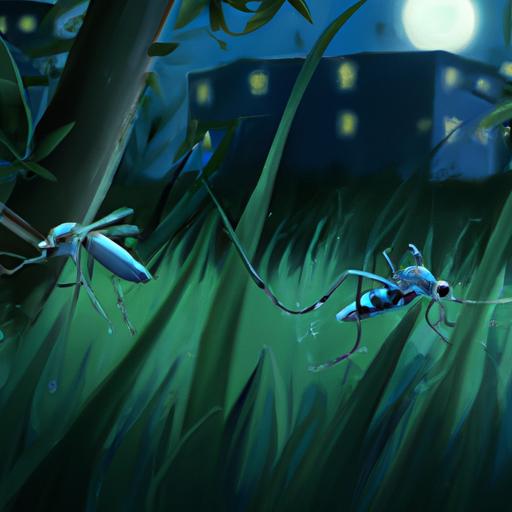Mosquitoes.
We all know them.
We all hate them.
But why are there so many of them? Are there any benefits to having them around? In this article, we will look at the nature of mosquitoes, why their population levels are so high, and the benefits of controlling them.
We will also offer tips for preventing mosquitoes from becoming a nuisance in your backyard.
Read on to learn more about why there are so many mosquitoes and how you can keep them away.
Table of Contents
Short Answer
Mosquitoes require very little to breed, so they are able to reproduce quickly and in large numbers.
They prefer stagnant water, so areas that are warm and humid can be ideal breeding grounds.
Mosquitoes also have a long lifespan, which allows them to produce many generations in a short period of time.
Additionally, many species are capable of migrating long distances, which expands their range and increases the number of mosquitoes.
The Nature of Mosquitoes
Mosquitoes are a type of small flying insect found in many parts of the world.
They are known for their annoying bites and their ability to spread deadly diseases like malaria, dengue fever, West Nile virus, and more.
Mosquitoes have a complex life cycle, with different stages of development that depend on environmental conditions.
They lay their eggs in standing water and the eggs hatch into larvae, which feed on microorganisms in the water.
The larvae then transform into pupae, which eventually become adult mosquitoes.
Adult mosquitoes feed on the blood of hosts, such as humans and animals, and can live for up to several weeks.
There are over 3,500 species of mosquitoes in the world, and each species is adapted to its particular environment.
Mosquitoes are important to the ecosystem, as they are food for other animals and also act as pollinators for plants.
Mosquitoes are known for their persistence and ability to spread disease.
They can travel long distances in search of food, and they are attracted to the carbon dioxide that is released when humans and animals exhale.
Female mosquitoes are especially dangerous, as they require a blood meal for their eggs to develop properly.
Mosquitoes can spread diseases through their saliva, which is injected into the host during feeding.
Mosquito-borne illnesses can cause severe symptoms and in some cases can be fatal.
Mosquitoes are notoriously difficult to control, as traditional methods such as pesticides and bug sprays can be dangerous to humans and the environment.
Fortunately, there are many natural methods for controlling mosquitoes, such as removing standing water sources, using natural repellents, and introducing predators such as dragonflies and bats.
Mosquito control is an important part of public health, as it can help reduce the spread of diseases and the annoyance of mosquito bites.
What Causes High Mosquito Population Levels?

When it comes to understanding the high population levels of mosquitoes, there are a few key factors to consider.
The most influential factor is the presence of warm weather, as mosquitoes thrive in warm climates.
Mosquitoes also require standing water in order to breed, meaning that any areas with stagnant water will be more prone to mosquito infestations.
Finally, the presence of human populations is a major factor in the spread of mosquitoes.
Humans are a key food source for mosquitoes, so areas with higher human populations tend to have higher mosquito populations.
Aside from these main factors, there are also other contributing factors that can lead to higher mosquito populations.
For example, the presence of other animals, such as birds and mammals, can provide a food source for mosquitoes.
Furthermore, certain plants and trees can provide a safe haven for mosquitoes, allowing them to hide and reproduce in safety.
Finally, the level of air pollution in an area can also affect the mosquito population, as higher levels of pollutants can lead to higher levels of mosquito-borne diseases.
In addition to these factors, there are also certain human activities that can lead to higher mosquito population levels.
For example, the use of pesticides and other chemicals can lead to an increase in the number of mosquitoes in an area, as the chemicals can kill off their natural predators.
Similarly, the use of irrigation systems and other water-related activities can also lead to higher mosquito populations, as they can provide standing water for mosquitoes to breed in.
Ultimately, there are a variety of factors that can contribute to a high mosquito population.
From warm weather and standing water to human populations and air pollution, these factors can all lead to an increase in the number of mosquitoes in an area.
As such, it is important to understand these factors and take appropriate action to reduce the spread of mosquito-borne diseases.
Reason #1
One of the primary reasons why there are so many mosquitoes around the world is because of the warm weather.
Mosquitoes thrive in warm climates with high levels of humidity, as this allows them to breed and reproduce more quickly.
The warm weather also makes it more difficult for predators to survive and for mosquito eggs to be destroyed.
This means that mosquito populations can quickly outnumber other animals and insects, leading to an increase in their numbers.
Additionally, many areas of the world have seasonal rains and floods, which can provide the perfect breeding grounds for mosquitoes.
Reason #2

The second factor in explaining why there are so many mosquitoes is the presence of human populations.
Mosquitoes are attracted to humans due to our body heat and the carbon dioxide we exhale.
They are also attracted to our sweat, which can also contain other substances such as lactic acid and ammonia.
As humans tend to congregate in cities and towns, urban areas are especially prone to mosquito infestations.
Mosquito control measures such as insecticides, larvicides, and the elimination of standing water can help reduce the presence of mosquitoes in populated areas.
Additionally, mosquitoes are attracted to light, so keeping outdoor lights off when not in use can help keep them away.
Reason #3
Reason #3 why there are so many mosquitoes is the presence of human populations.
Mosquitoes are attracted to the presence of humans because of the warmth and the availability of food.
Mosquitoes feed on human blood and reproduce at a rapid rate when there are large concentrations of people living in close proximity.
This is why areas with high population density tend to have more mosquitoes than areas with fewer people.
Additionally, human activity such as farming, construction, and irrigation can create areas of standing water which provide an ideal breeding ground for mosquitoes.
Finally, human activity can also create an abundance of food for mosquitoes, such as plants, animals, and even garbage, which can attract the insects.
These factors all contribute to the presence of mosquitoes in areas with high population density.
The Benefits of Mosquito Control

Mosquito control is an important part of public health and maintaining a healthy environment.
Mosquito control helps reduce the spread of diseases and the annoyance of mosquito bites.
Not only does it prevent diseases, it also helps protect agricultural crops and livestock from diseases carried by mosquitoes.
Mosquito control also helps to reduce the number of mosquitoes in the environment, which can help reduce the amount of mosquitoes in the environment and the risk of mosquito-borne diseases.
Mosquito control also helps to reduce the amount of standing water in the environment, which can prevent more mosquitoes from breeding.
Lastly, mosquito control helps to reduce the amount of insecticides used in the environment, which not only helps to reduce the risk of adverse environmental effects, but also saves money.
Tips for Preventing Mosquitoes
Preventing mosquitoes is an important part of maintaining public health and keeping your home and yard mosquito-free. Here are some tips to help you reduce the number of mosquitoes in your area:
– Reduce standing water: Mosquitoes need standing water to breed, so reducing the amount of standing water in your yard is a key step in mosquito prevention. Regularly check for any containers, such as buckets, tires, and flower pots, that may be holding water and empty them out. Make sure your gutters and drainage systems are clear and working properly.
– Use mosquito repellents: Repellents are a great way to reduce the number of mosquitoes in your area. There are a variety of products available, including sprays, candles, and bracelets, that are designed to keep mosquitoes away.
– Install window screens: Installing window screens is another great way to reduce the number of mosquitoes in your home. Screens prevent mosquitoes from entering your home and will help keep your family safe.
– Plant mosquito-repelling plants: Certain plants, such as citronella, lavender, and marigolds, are known to repel mosquitoes. Planting them in your yard or in containers around your home can help reduce the number of mosquitoes in your area.
– Use mosquito traps: Mosquito traps are a great way to reduce the number of mosquitoes in your area. There are a variety of traps available, including electric traps, attractants, and sticky traps, that can help reduce the number of mosquitoes in your yard.
By taking these steps, you can help reduce the number of mosquitoes in your area and keep your family safe from the dangers of mosquito-borne illnesses.
Final Thoughts
Mosquitoes are a nuisance, but they are also capable of transmitting deadly diseases.
By understanding the factors that contribute to their high population levels, such as warm weather, standing water, and human populations, we can take steps to reduce their numbers.
Mosquito control is an important part of public health, and by taking preventative measures like draining standing water and wearing protective clothing, we can help reduce the threat of mosquitoes in our communities.
With the right knowledge and action, we can make a difference in the fight against mosquitoes.

